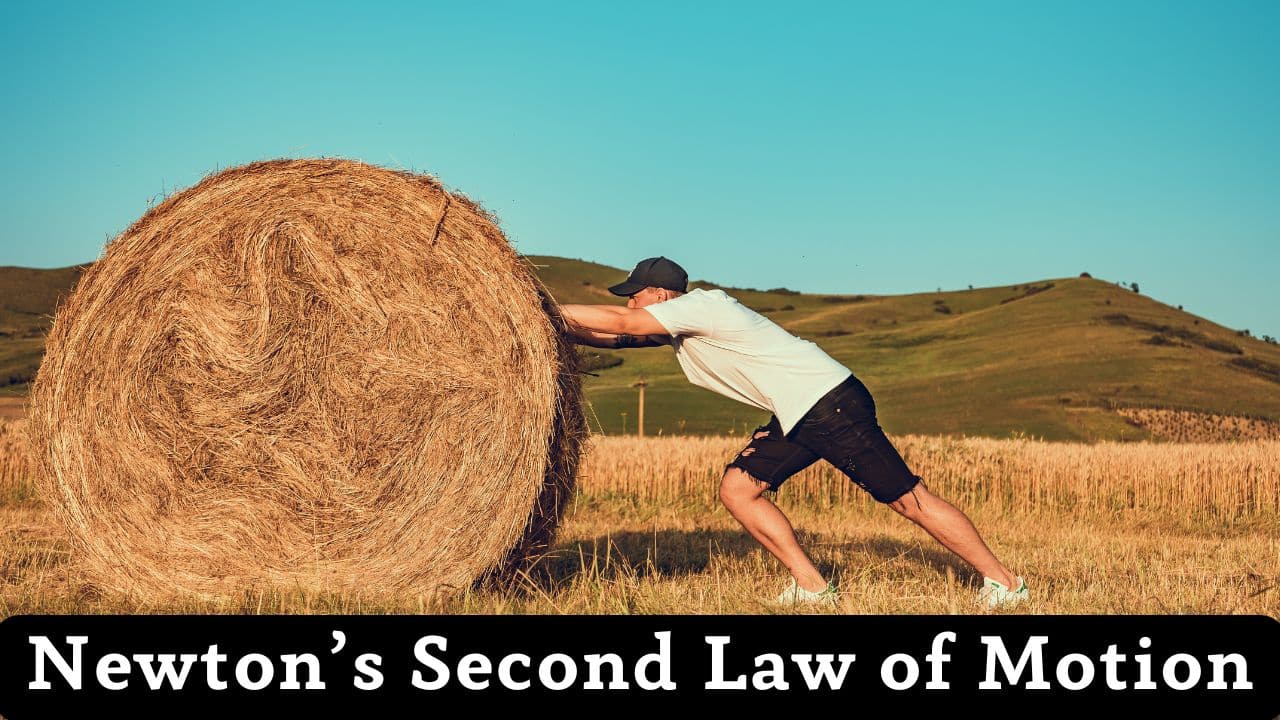
Newton’s Second Law of Motion
Master the fundamental relationship between force, mass, and acceleration in physics!
What is Newton’s Second Law and Why is it Important?
Newton’s Second Law states that the acceleration of an object is directly proportional to the net force acting on it and inversely proportional to its mass. This fundamental principle is expressed as F = ma.
Why Newton’s Second Law matters: This law is the cornerstone of classical mechanics, enabling us to predict motion, design structures, analyze forces, and understand the behavior of everything from atoms to galaxies. Learn more about Newton’s laws of motion and their historical significance.
Types of Force Analysis:
- Applied Forces: External forces acting on objects
- Weight Forces: Gravitational force acting on mass (W = mg)
- Normal Forces: Contact forces perpendicular to surfaces
- Friction Forces: Resistance forces opposing motion
- Tension Forces: Forces transmitted through strings, cables, or ropes
- Net Forces: Vector sum of all forces acting on an object
The Physics of Force, Mass, and Acceleration
Newton’s Second Law establishes the quantitative relationship between the three fundamental concepts of mechanics: force, mass, and acceleration.
Fundamental Force Equations:
Newton’s Second Law:
F = ma
Force equals mass times acceleration
Mass Calculation:
m = F / a
Mass equals force divided by acceleration
Acceleration Calculation:
a = F / m
Acceleration equals force divided by mass
Weight Force:
W = mg
Weight equals mass times gravitational acceleration
Net Force:
F_net = ΣF
Net force is the vector sum of all forces
Friction Force:
f = μN
Friction equals coefficient times normal force
Key Physics Principles:
- Vector Nature: Force and acceleration are vector quantities with direction
- Proportionality: Doubling force doubles acceleration (constant mass)
- Inverse Relationship: Doubling mass halves acceleration (constant force)
- Units Consistency: Force in Newtons, mass in kg, acceleration in m/s²
- Reference Frames: Laws apply in inertial (non-accelerating) reference frames
- Equilibrium: Zero net force results in zero acceleration (constant velocity)
Force Analysis in Different Scenarios
Force analysis involves identifying all forces acting on an object and applying Newton’s Second Law to determine the resulting motion or equilibrium conditions.
Common Force Scenarios:
| Scenario | Key Forces | Primary Equation | Acceleration Direction | Example |
|---|---|---|---|---|
| Free Fall | Weight (mg) | F = mg, a = g | Downward | Dropped object |
| Horizontal Push | Applied force, friction | F_net = F_applied – f | Direction of net force | Pushing a box |
| Inclined Plane | Weight components, normal | F = mg sin θ | Down the slope | Object on ramp |
| Tension System | Tension, weight | T = ma + mg | Depends on acceleration | Elevator, pulley |
| Circular Motion | Centripetal force | F_c = mv²/r | Toward center | Car turning |
| Equilibrium | Balanced forces | ΣF = 0 | No acceleration | Object at rest |
Units and Measurements in Force Calculations
Consistent units are crucial for accurate force calculations. The SI system provides the standard framework for force, mass, and acceleration measurements.
Force and Mass Units:
| Quantity | SI Unit | Symbol | Common Alternatives | Conversion Factor |
|---|---|---|---|---|
| Force | Newton | N | lbf, kgf, dyn | 1 N = 1 kg⋅m/s² |
| Mass | Kilogram | kg | g, lb, oz, t | 1 kg = 1000 g |
| Acceleration | Meter per second squared | m/s² | ft/s², g-force | 1 g = 9.81 m/s² |
| Weight | Newton | N | lbf, kgf | 1 kgf = 9.81 N |
| Pressure | Pascal | Pa | psi, bar, atm | 1 Pa = 1 N/m² |
| Energy | Joule | J | cal, BTU, kWh | 1 J = 1 N⋅m |
Practice Problems and Worked Solutions
Problem 1: Basic Force Calculation
Question: A 50 kg object accelerates at 2 m/s². What force is applied?
Click to see detailed solution
Given: m = 50 kg, a = 2 m/s²
Formula: F = ma
Calculation: F = 50 × 2 = 100 N
Answer: Applied force = 100 N
Problem 2: Mass Calculation
Question: A force of 150 N causes an acceleration of 3 m/s². What is the object’s mass?
Click to see detailed solution
Given: F = 150 N, a = 3 m/s²
Formula: m = F / a
Calculation: m = 150 / 3 = 50 kg
Answer: Mass = 50 kg
Problem 3: Weight Calculation
Question: What is the weight of a 75 kg person on Earth (g = 9.81 m/s²)?
Click to see detailed solution
Given: m = 75 kg, g = 9.81 m/s²
Formula: W = mg
Calculation: W = 75 × 9.81 = 735.75 N
Answer: Weight = 735.75 N (≈ 736 N)
Problem 4: Net Force Analysis
Question: Two forces act on a 20 kg object: 100 N east and 60 N west. Find the acceleration.
Click to see detailed solution
Given: m = 20 kg, F₁ = 100 N (east), F₂ = 60 N (west)
Net Force: F_net = 100 – 60 = 40 N (east)
Formula: a = F_net / m
Calculation: a = 40 / 20 = 2 m/s² (east)
Answer: Acceleration = 2 m/s² eastward
Problem 5: Inclined Plane
Question: A 10 kg block slides down a 30° incline. Find the acceleration (ignore friction).
Click to see detailed solution
Given: m = 10 kg, θ = 30°, g = 9.81 m/s²
Force down incline: F = mg sin θ
Calculation: F = 10 × 9.81 × sin(30°) = 10 × 9.81 × 0.5 = 49.05 N
Acceleration: a = F / m = 49.05 / 10 = 4.905 m/s²
Answer: Acceleration = 4.91 m/s² down the incline
